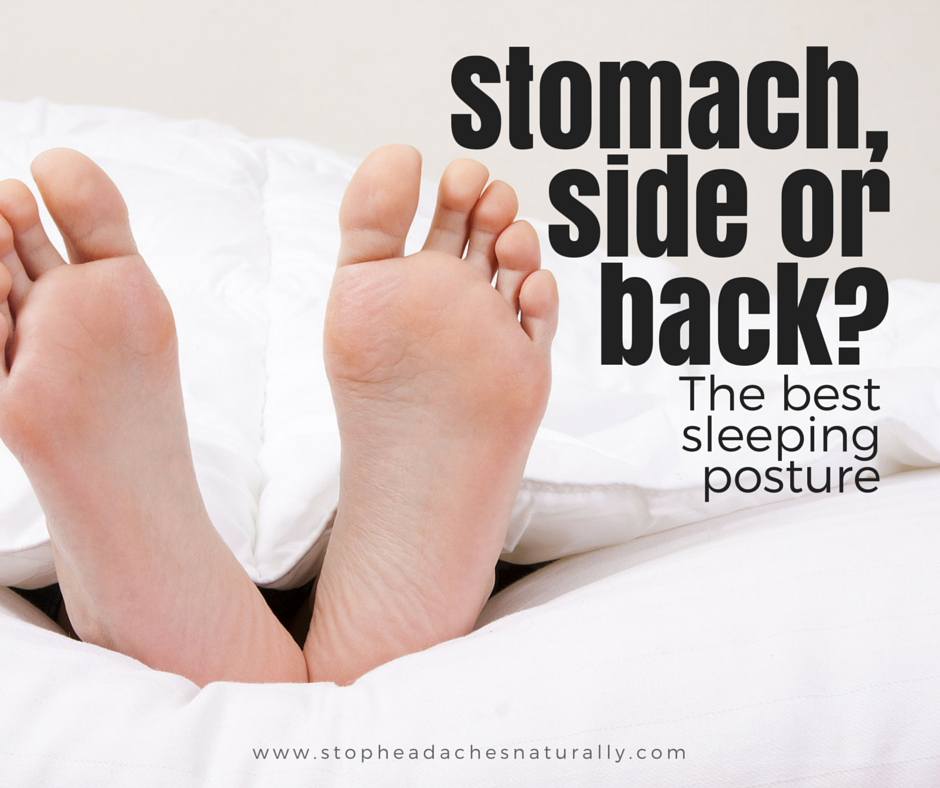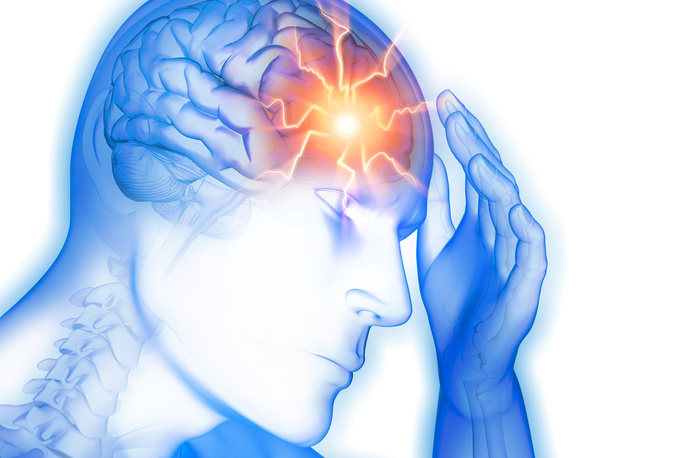What Is The Best Sleeping Posture?

We have all woken up with a stiff neck or sore back and immediately thought, “I must have slept the wrong way”.
Most people are aware that poor sleeping posture can cause neck, shoulder and back pain. However the important role that it can play in provoking headache attacks tends to go unrecognized.
Considering we spend almost a third of our life in bed, we ought to pay more attention to our sleeping posture. Perhaps you have an ergonomic chair at work but what about the mattress and pillow on your bed?
A good mattress and pillow can certainly help your sleeping posture. Mattresses and pillows also wear out and need to be replaced regularly.
However it is even more important to look at the way you lie in bed.
Although we change our position many times while we are asleep, we all have a favourite position. This is the position that we adopt automatically as we drift off to sleep, the one we continually return to during the night. Hence it is the position that we spend the most time in. Video studies have shown almost everyone is able to identify it reliably.[5b]
Do you prefer to sleep on your side, on your back or on your stomach? There is some disagreement among scientists and doctors as to whether sleeping on your side or your back is better for the spine.
However all are agreed that sleeping on your stomach is very bad for the spine and should be avoided.
Stopping sleeping on your stomach may be one of the most effective things you can do to stop your headaches. Just what it is wrong with sleeping on your stomach is discussed in the next section.
Having good sleeping posture means that when you are lying in bed in your usual position:
- Your pillow and mattress should support your head and body so that your spine retains its three natural curves, just as when you are sitting or standing.
- Your spine, and especially your neck (cervical spine), should not be twisted to one side – your shoulders and hip bones should be aligned.
The position of your arms and legs should not put any muscles in either an overly shortened or overstretched state. For example, avoid crossing your arms tightly against your chest as shown in the photo.
Awkward positions such as this, when held for hours on end during sleep, will cause or reactivate muscular trigger points and worsen existing muscle imbalances.
Our postural habits are so ingrained that we are mostly unaware of them. It is a good idea to demonstrate the way you usually lie when you go to sleep to your manual therapist and ask them to comment on any possible problem areas that they notice.
This is an excerpt from Stop Headaches Naturally | Chapter 8 - Postural Tips For Sleeping
Why Does Stress Plus Muscle Tension Equal Headache?

Both migraine and tension headache sufferers list emotional stress, and feelings such as anxiety, worry, fear, anger, and frustration that accompany it, as their most important trigger. But emotional stress is more than a trigger. It is part of the mechanism that produces a headache.
Emotional stress can contribute to headaches by:
- Interfering with natural pain suppression mechanisms
- Increasing the excitability of the brain
- Altering bloodflow to and within the brain
- Causing the release of histamine, a vasodilator and inflammatory substance
- Increasing musculoskeletal pain
On-going stress can lower your headache threshold, making it more likely that exposure to your other triggers will provoke a headache attack. Specific short term stressful episodes may trigger a headache attack. [12]
The role of emotional stress in provoking headaches is reasonably well appreciated. However few headache sufferers are aware that the sustained and excessive amounts of muscle tension may play an equally important role.
Nor are they usually aware of just how tight the muscles in their jaw, neck and shoulders actually are for most of the time. Sustained tension in these muscles is a common response to emotional stress.
It is also the result of maintaining the upper part of your body in a fixed posture. Sitting without moving for lengthy periods of time is a major culprit. Sitting with your neck craned forwards magnifies the problem. This “forward head posture” [13] will also cause pain in the joints of your neck.
Tight or tense muscles are muscles that are actively contracting. However, as we have seen, when muscles stay contracted for too long without relaxing they start to suffer microscopic tissue damage. Various inflammatory substances are released into the muscle fluid from where they are transported into the blood stream.
"when muscles stay contracted for too long without relaxing
they start to suffer microscopic tissue damage"
Hence on-going tension in neck, jaw and shoulders acts as a continual low level source of pain which can reduce your headache threshold. If trigger points are present, tension may irritate them sufficiently to provoke a headache attack.
Muscle tension, like emotional stress, lowers your headache threshold, making a headache attack more likely. Muscle tension can also act as a headache trigger.
[12] JM. Nash and RW Thebarge (2006). “Understanding Psychological Stress, Its Biological Processes, and Impact on Primary Headache.” Headache 46(9):1377- 1386.
[13] DG Borenstein, SW Wiesel and SD Boden (2004). Low back and neck pain: comprehensive diagnosis and management, p231-233, Edition 3, Elsevier.





